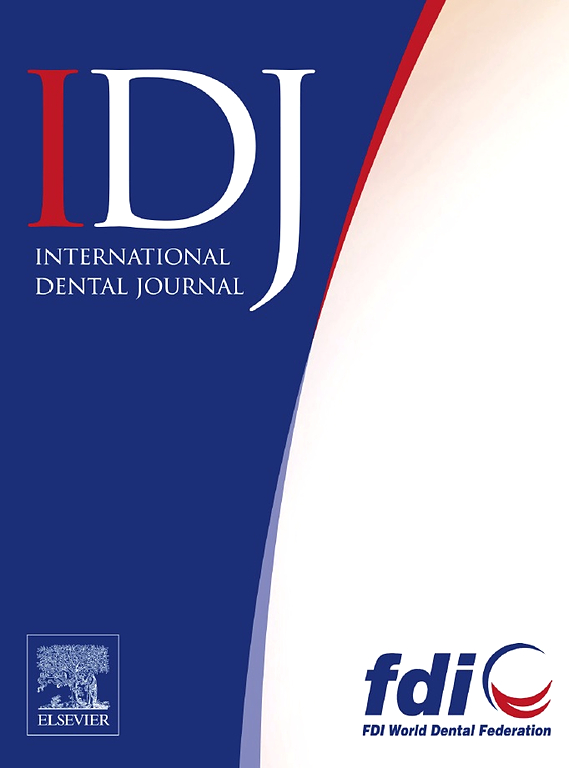牙科学生戒烟教育与培训的学习效果:系统回顾
IF 3.2
3区 医学
Q1 DENTISTRY, ORAL SURGERY & MEDICINE
引用次数: 0
摘要
目的本系统综述的目的是评估戒烟教育和培训对牙科学生学习成果的有效性。方法采用PubMed、Web of Science、EMBASE、SCOPUS、Cochrane Library、CINAHL、APA PsycINFO等数据库进行全面的文献检索,检索时间截止到2025年3月。纳入标准包括所有随机对照试验和准实验研究,使用医学教育研究质量工具评估方法学质量。结果初步检索到922篇文献,最终纳入9篇中等质量的研究,包括3项随机对照试验和6项准实验研究,共涉及498名牙科学生。所采用的教学方法包括讲课、合作学习和混合学习方法。值得注意的是,所有显示出大效应的研究都使用了合作或混合教学策略。五项研究表明,在统计上显著提高了学生关于戒烟的知识(P <;.05),有3项研究报告了较大的效应量(Cohen’s d: 1.41-2.80)。四项研究表明,培训显著改善了牙科学生对戒烟的态度和动机(P <;.05),有2项研究表明大效应量(Cohen’s d: 0.94-2.00)。五项研究表明,学生在戒烟咨询(TCC)行为方面的技能有了显著提高,其中三项研究显示了较大的效应量(Cohen’s d: 0.95-2.50)。三项研究表明,训练后学生的自我效能显著提高,均显示出较大的效应量(Cohen’s d: 1.41-2.00)。结论总体而言,戒烟培训对实现牙科本科学生的学习成果具有积极的效果。为了在时间和资源限制内优化结果,适当的教学方法是必不可少的。协作式和混合式学习策略可以促进课堂互动,改善基本学习成果。然而,需要进一步的实验研究来确定这种训练的长期效果。本文章由计算机程序翻译,如有差异,请以英文原文为准。
The Learning Outcomes of Smoking Cessation Education and Training for Dental Students: A Systematic Review
Objectives
The aim of this systematic review was to assess the effectiveness of smoking cessation education and training on the learning outcomes of dental students.
Methods
A thorough literature search was conducted using the PubMed, Web of Science, EMBASE, SCOPUS, Cochrane Library, CINAHL, and APA PsycINFO databases, covering publications up to March 2025. The inclusion criteria comprised all randomized controlled trials and quasi-experimental studies, with the assessment of methodological quality performed using the Medical Education Research Study Quality Instrument.
Results
The initial search identified 922 articles, from which 9 moderate-quality studies were ultimately included, comprising 3 randomized controlled trials and 6 quasi-experimental studies, involving a total of 498 dental students. The instructional methods employed encompassed lectures, collaborative learning, and blended learning approaches. Notably, all studies exhibiting large effect sizes utilized either collaborative or blended teaching strategies. Five studies demonstrated statistically significant enhancements in students’ knowledge regarding smoking cessation (P < .05), with 3 studies reporting large effect sizes (Cohen’s d: 1.41-2.80). Four studies revealed that training significantly improved dental students’ attitudes and motivation towards tobacco cessation (P < .05), with 2 studies indicating large effect sizes (Cohen’s d: 0.94-2.00). Five studies showed significant advancements in students’ skills related to tobacco cessation counselling (TCC) behaviours, with 3 studies showing large effect sizes (Cohen’s d: 0.95-2.50). Three studies indicated a significant increase in students’ self-efficacy post-training, all of which demonstrated large effect sizes (Cohen’s d: 1.41-2.00).
Conclusions
Overall, smoking cessation training was determined to be positively effective in achieving the learning outcomes of undergraduate dental students. To optimize outcomes within time and resource limits, appropriate teaching methods are essential. Collaborative and blended learning strategies can boost classroom interaction and improve essential learning outcomes. However, further experimental research is necessary to ascertain the long-term effects of such training.
求助全文
通过发布文献求助,成功后即可免费获取论文全文。
去求助
来源期刊

International dental journal
医学-牙科与口腔外科
CiteScore
4.80
自引率
6.10%
发文量
159
审稿时长
63 days
期刊介绍:
The International Dental Journal features peer-reviewed, scientific articles relevant to international oral health issues, as well as practical, informative articles aimed at clinicians.
 求助内容:
求助内容: 应助结果提醒方式:
应助结果提醒方式:


